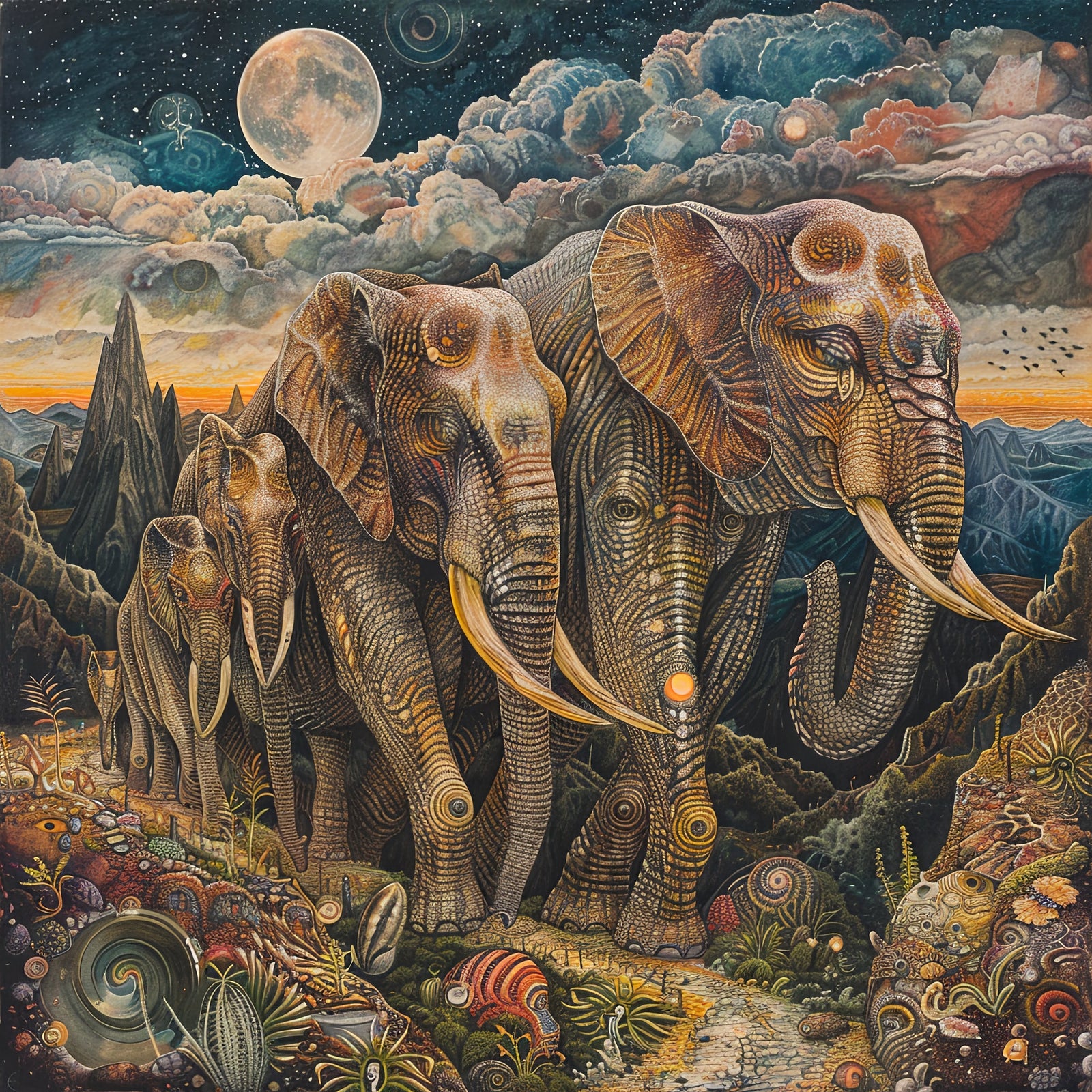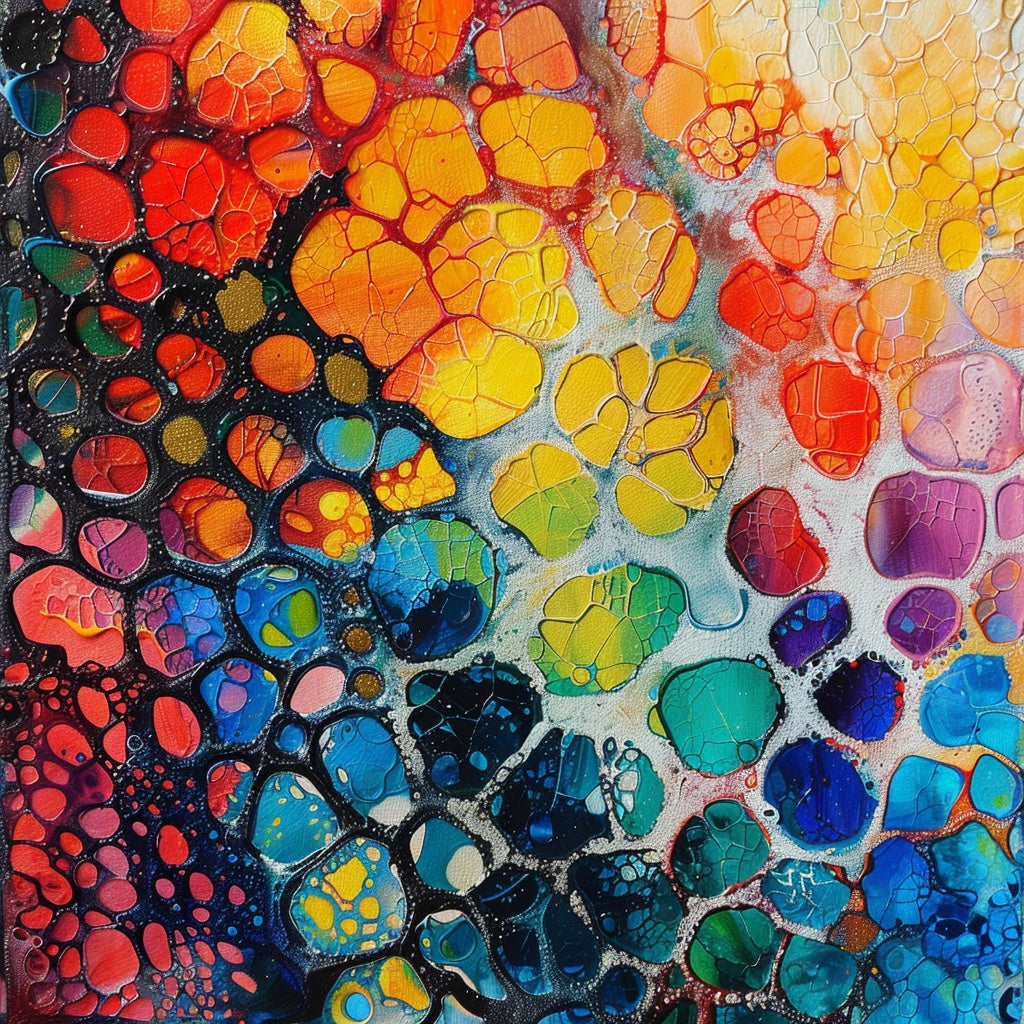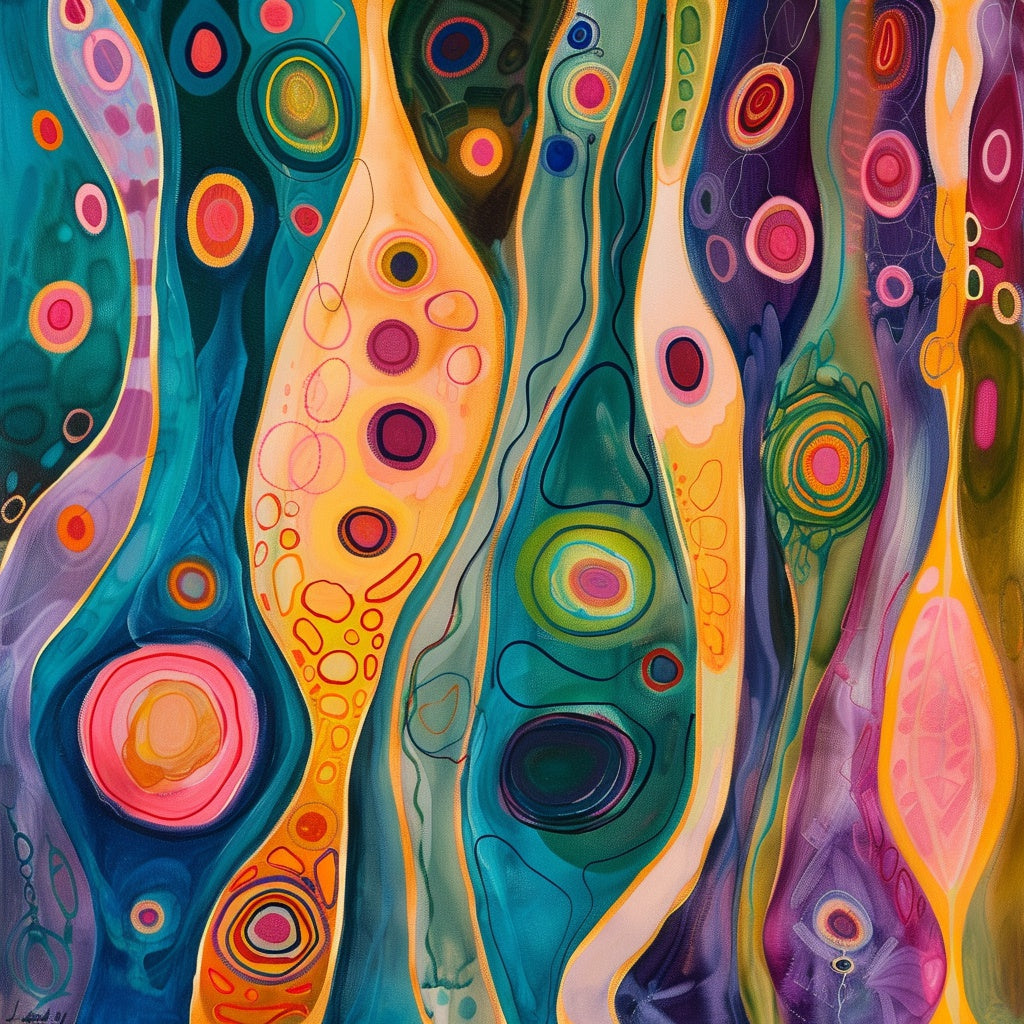Creating AI Art Self-Portraits: A Comprehensive Guide
The world of AI art is rapidly evolving, offering exciting new avenues for self-expression. This guide will walk you through the process of creating AI-generated images of yourself, from selecting the right tools to mastering the art of prompt engineering.
Table of Contents
- Introduction
- Choosing the Right AI Art Generator
- Training Your AI Model
- Mastering the Art of Prompt Engineering
- Refining and Enhancing Your AI Images
- Exploring Different Styles and Aesthetics
- Finding Inspiration: Examples of AI Art of People
Introduction
AI image generators have revolutionized the way we create art. By analyzing millions of image-text pairs, these tools can produce unique visuals from text descriptions [1]. Now, you can insert yourself into this creative process, generating personalized AI art that reflects your unique identity. This guide will provide a detailed walkthrough of how to create compelling AI self-portraits, emphasizing the importance of platform selection, model training, prompt engineering, and post-processing techniques.
Choosing the Right AI Art Generator
Not all AI art generators are the same, some focus on text-to-image generation, while others allow you to incorporate your own images [2]. Here are some platforms that stand out in terms of image uploads and customization capabilities.
Artguru
Artguru is a user-friendly platform that provides a variety of artistic styles. It allows users to convert photos into AI art, offering styles such as oil painting, watercolor, cyberpunk, and cartoon [2]. It is a good option for beginners who want a straightforward approach to generating AI art.
PicLumen
PicLumen offers three distinct modes for image-to-image generation: Content, Style, and Character [2]. This provides more control over the transformation process. You can transform your images while keeping key elements, mimic a specific style, or maintain character consistency [2]. This makes PicLumen a versatile choice for various creative projects.
Vondy
Vondy is a feature-rich platform that utilizes the DALL-E API [2]. It allows users to upload images, specify a style, and apply effects to transform their images. Vondy is suitable for those who want a wide range of features and the ability to fine-tune their AI art creations.
OpenArt
OpenArt is an AI-powered platform where users can create images using pre-built models or by training their own [2]. The platform also offers an 'Image Guidance' option that allows you to upload an image and recreate it in styles such as Impressionism, Baroque, or Van Gogh [2]. This flexibility makes OpenArt a strong option for users seeking diverse artistic outputs.
Training Your AI Model
Some platforms require you to train a custom AI model on your likeness before generating images [3]. This process involves uploading a set of images (at least 12) with varied facial expressions, angles, and lighting to accurately capture your unique features [3]. The AI then uses these images to build a model that can create images that resemble you [3]. For example, you could provide photos of yourself smiling, frowning, and in different lighting conditions.
The choice of the underlying model is very important [4]. A good model will be able to capture the nuances of your appearance and generate realistic and accurate images [4]. When choosing a model, consider the size and diversity of the training dataset, the algorithms used, and the level of control offered during the generation process [4]. Some platforms bypass this step and allow you to upload an image and apply styles directly.
Mastering the Art of Prompt Engineering
Once you've chosen your platform and trained a model (if needed), the next step is crafting effective prompts [5]. A prompt is the textual instruction given to the AI, and the quality of your prompt will greatly affect the output. Here are some key tips for writing prompts that will produce the desired results.
Be Specific
The more detailed your prompt, the better the AI can understand your vision [5]. Instead of saying, "a picture of me," try something like "A portrait of me in the style of a Renaissance painting, with a background of rolling hills and a dramatic sunset" [5]. The specificity will guide the AI to produce more accurate results.
Use Descriptive Language
Clearly describe the scene, objects, colors, and specific details you envision [5]. For example, instead of just asking for a picture of you in a forest, use descriptions like, "A photo of me standing in a dense forest with tall trees, sunlight filtering through the leaves, and a small stream in the background." The more details, the better the AI understands the context.
Experiment with Styles
Explore the different styles that the platform provides and see how they influence the final image [5]. Specify the medium (e.g., oil painting, watercolor), material (e.g., porcelain, candy), photography style (e.g., high-key, low-key), lighting (e.g., natural, neon), or color palette (e.g., cool tones, earth tones) in your prompt [5]. This lets you achieve different visual effects. For instance, you can create a photo of yourself as an oil painting or as a porcelain figurine using the same initial image.
Keep it Concise
Avoid overloading your prompts with too many details, as this can confuse the AI [5]. Focus on the most critical elements and let the AI fill in the rest [5]. For instance, instead of describing every minute detail, focus on the core visual aspects and let the AI add its own interpretations and details within the specified style.
Use Negative Prompts
Specify elements you don't want to see in the image [5]. This can further refine your results [5]. For example, add "no hats" or "no sunglasses" to exclude them from the generated image [5]. Negative prompts help the AI narrow the desired characteristics of the image.
Refining and Enhancing Your AI Images
After generating your image from a prompt, you can use additional tools to refine and improve it [6]. Most platforms offer adjustment tools for elements like brightness, color, and sharpness [6]. Additionally, you can add special effects to enhance the visual appeal of the image [6]. Some platforms such as Photoroom, include features for background removal and replacement, making it simple to integrate your image into different settings [6]. For example, you can place yourself in front of the Eiffel Tower or on a tropical beach.
AI can also be used to improve existing photos of yourself by enhancing the background or other elements [6]. You could, for instance, enhance the lighting of a portrait or remove blemishes in a photo and give it a more artistic aesthetic. This post-processing is essential for transforming a good image into a great one.
Exploring Different Styles and Aesthetics
AI art generators offer a wide range of styles and aesthetics, allowing you to experiment with different artistic expressions [7]. Here are several examples to get you started.
Traditional Art Styles
Explore styles such as Impressionism, Cubism, and Realism [7]. These styles can provide a timeless and classic feel to your AI-generated self-portraits. For instance, an Impressionist portrait will have soft, visible brushstrokes, while a Cubist image would depict you from multiple perspectives simultaneously.
Abstract Art
Experiment with Surrealism and Abstract Expressionism [7]. These styles allow for a more interpretative and non-realistic representation of yourself, adding an element of creativity and intrigue.
Modern and Digital Art
Explore Pop Art, Digital Painting, and Glitch Art [7]. These styles create modern and visually striking self-portraits, great for making bold statements or using as social media profile images. Pop Art will use bright colors and simple, bold patterns, while Glitch art will have intentionally distorted visual effects.
Photorealism
Generate images that closely resemble high-resolution photographs [7]. This style is perfect for realistic AI self-portraits that capture your likeness as precisely as possible.
Sci-Fi and Fantasy
Try Concept Art and Surreal Fantasy [7]. These styles can transport you into otherworldly realms. They are suitable for making imaginative and visually stunning self-portraits, whether you're posing as a futuristic cyborg or an ethereal fairy.
Anime Styles
Experiment with 2D and 3D anime with vibrant colors and exaggerated features [7]. This style allows you to transform your portraits into character-like representations with large eyes and dynamic poses, suitable for anime fans.
Cartoon and Comics
Explore Manga and Comic Book styles [7]. These styles give your portraits a fun and illustrative feel. A Manga style might depict you with sharp lines and expressive features, while a Comic Book style will have bold lines, dynamic action poses, and visual effects like speech bubbles.
Other Styles
Consider Lego, Disney Pixar, Art Deco Revival, Pop Surrealism, and Risograph [7]. Each of these styles offers its own unique look and feel. You can, for instance, transform yourself into a Lego figurine, a Disney Pixar character, or create a portrait with the geometric patterns of Art Deco.
Finding Inspiration: Examples of AI Art of People
Before you start creating your own AI self-portraits, take inspiration from existing AI art featuring people [8]. Here are some notable examples:
- "Portrait of Edmond de Belamy": This AI-generated portrait was the first AI artwork sold at a major auction house [9]. Created using a Generative Adversarial Network (GAN), this portrait demonstrates how AI can produce complex and sophisticated visual art [9].
- AI-generated jewelry designs: Jewelry designer Cristina Beller used Midjourney to create stunning AI-generated jewelry designs [8]. This shows how AI can be used as a creative partner in crafting unique and innovative products [8].
- "I Love Lucy" toys: Fast Company's technology editor used DALL-E to create imaginary "I Love Lucy" toys, showcasing the potential of AI to generate creative product ideas [9]. This example illustrates how AI can be utilized for product development and marketing concepts.
- AI-generated portraits in various styles: CBS News showcased AI-generated portraits inspired by artists like Renoir, Kehinde Wiley, and Norman Rockwell [9]. This highlights the capability of AI to mimic different artistic styles and create portraits that appear as if they were done by traditional artists.
These examples show how versatile AI is and how it can be applied to many different artistic outputs [10]. Use these examples as a starting point to explore your creativity and experiment with different styles and approaches for your self-portraits.
Creating AI art of yourself is a fascinating journey that combines technology and creativity. By choosing the right platform, training your models effectively, and crafting detailed prompts, you can create personalized and compelling self-portraits. As AI technology continues to evolve, the possibilities for creative expression are only just beginning.
Footnotes
[1] The 7 best AI image generators - Zapier
[2] Free AI Art Generator from Photo - Convert Images to AI Art - Artguru; Free Image to Image AI | Create AI Art from Images - PicLumen; Best Upload Image To Ai Generator | Vondy; OpenArt
[3] How To Generate AI Images Of Yourself 2024 - YouTube
[4] How to Create REALISTIC AI Images of Yourself - YouTube
[5] How to use an AI image generator to create visuals (Detailed guide) - Photoroom; How to Use AI Image Generators for Best Results, Narrato; Zapier
[6] How to use an AI image generator to create visuals (Detailed guide) - Photoroom
[7] Must-Try Art Styles for Generative AI in 2024 - Perfect Corp.; Tengr.ai Blog;
[8] These Artists Are Using AI as a Creative Partner. See How! - Worklife VC
[9] 10 Mind-Blowing Examples of AI Generated Art - ClickUp; Art created by artificial intelligence: "Frightening and fascinating all at the same time", CBS News
[10] 10 Mind-Blowing Examples of AI Generated Art - ClickUp



Leave a comment (all fields required)